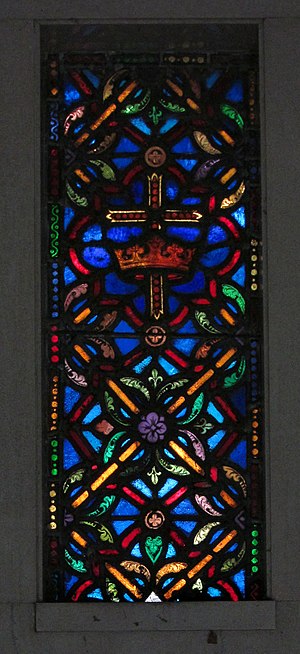
A simple square rustic mausoleum with Doric columns and a good stained-glass window in the back.


Almost starkly modern in form, the Kress mausoleum balances its simple cubical shape with a profusion of ornamental etching, an elaborate bronze door, and unusually artistic letters for the family name.

Stained glass on the inside echoes the external ornament. There are stained-glass windows on the sides as well as in the rear.
